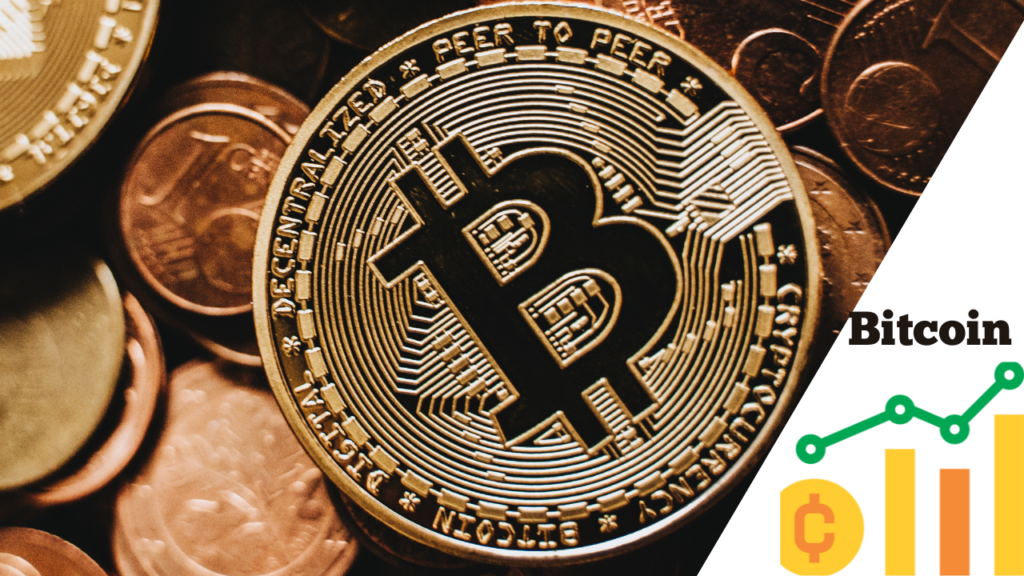
Bitcoin (BTC) is the first cryptocurrency created using blockchain technology, commonly known as a decentralized digital money based on encryption. Unlike government-issued or fiat currencies such as the US dollar or the euro, which are managed by central banks, Bitcoin can operate independently of a central authority such as a bank or a firm.
Its decentralized design enables it to operate on a peer-to-peer network, allowing users to send funds to one another without the need for intermediaries.
Who invented Bitcoin?
The creator is an anonymous individual or group known as Satoshi Nakamoto, who came up with the idea of an electronic peer-to-peer cash system, as described in a whitepaper. Until date, Satoshi Nakamoto’s true identity has not been confirmed, yet there has been speculation and hearsay about who Satoshi could be.
What we do know is that the first genesis block of BTC was mined on January 9, 2009, which marked the beginning of cryptocurrencies.
How does Bitcoin function?
While the general public perceives Bitcoin as a tangible coin, this is far from the case. Under the hood, it’s a distributed accounting ledger recorded as a chain of blocks, hence the term blockchain.
Let’s look at how Bitcoin differs from a commercial bank, which works as a centralized institution. In the event that Alice wishes to transact with Bob, the bank is the only entity that maintains the ledger that shows Alice and Bob’s balance.
The bank, which keeps the ledger, will verify if Alice has enough funds to give to Bob. Finally, when the transaction is successfully completed, the Bank will deduct Alice’s account and credit Bob’s account with the latest.
In contrast, Bitcoin operates in a decentralized manner. Because no central authority, such as a bank, exists to authenticate transactions and maintain the ledger, a copy of the ledger is distributed across Bitcoin nodes.

A node is a piece of software that anyone can download and run to join the network. As a result, everyone has a duplicate of Alice and Bob’s balances, and there will be no fund balance disputes.
Now, suppose Alice transacted with Bob using bitcoin. Alice must announce to the network her intention to give $1 to Bob in the corresponding amount of bitcoin. So, how does the system evaluate whether Alice has enough bitcoin to carry out the transaction? This is where mining occurs.
What is bitcoin mining?
A Bitcoin miner will use his or her computer equipment to validate Alice’s transaction for inclusion in the ledger. To prevent a miner from adding arbitrary transactions, they must first solve a hard puzzle. Only if the miner solves the puzzle (known as the Proof of Work), which occurs at random, is he or she permitted to enter the transactions into the ledger, and the record is final.
Because running computer rigs costs money due to capital expenditure, which includes the cost of the rigs as well as the cost of power, miners are compensated with fresh bitcoins.

This makes the Bitcoin ledger trustless and resistant to fraud. While the system is durable, there are still dangers connected with it, such as the 51% attack, in which miners control more than 51% of total computing power, and there may be security issues outside the control of the Bitcoin protocol.
To understand more about Bitcoin (BTC), you can
How can I keep my Bitcoin safe?
When transacting with coins, you usually do so on your personal computer. Because your computer is connected to the internet, it has the potential to become infected with malware or spyware, jeopardizing your finances.
Trezor and Ledger hardware wallets are highly recommended for reducing that danger. They resemble USB sticks and are external devices. Your Bitcoin private key is protected by a hardware wallet, which is a device that is not connected to your computer.
To conduct a transaction, you would connect the hardware wallet to your computer, and all key signing would be done on the device itself, apart from your computer.
Halving of Bitcoin
The term “Bitcoin Halving,” frequently referred to as “Halvening,” describes the halving of the block reward given to miners. In accordance with its inherent monetary philosophy, the mining incentive will be cut in half every four years, contributing to the 21 million Bitcoin ceiling.
There won’t be any more Bitcoin awarded to miners after the 21 million have been created; instead, they will be compensated with transaction fees. You can bookmark Coin Gecko’s bitcoin halving page to stay up to date on the exact timing of the halving.
For two reasons, this event is considered significant. First, traders can make assumptions about how Bitcoin’s potential scarcity could contribute to its high volatility. Second, some miners may leave the market as a result of the reduced payouts because they are unable to maintain the lower profitability. As a result, mining pools may pool and the hashing rate may decrease. As a result, during the halving phase, the bitcoin network can be a little erratic.
Why Does the Halving of Bitcoin Matter?
The halving of Bitcoin is beneficial for the economy and for survival.
In terms of the bitcoin economics, halving makes the cryptocurrency scarcer. Bitcoin halving lowers the rate of supply in response to fluctuating demand. Over time, there has been a steady increase in demand for bitcoin, which has been matched by a steady decline in supply.
It firmly establishes bitcoin as a store of value, to put it mildly. Bitcoin will only increase in value over time due to a slower supply compared to a growing demand. The impact of the halving on the value of bitcoin goes beyond the limits of supply and demand economics, taking into account market feelings and the need for limited resources.
Due to lost hard drives, forgotten wallet information, and bitcoins belonging to investors who have passed away, an estimated 3 million bitcoins are currently lost. Most of this amount is lost with no possibility of recovery. Bitcoin is a deflationary currency given the rate at which it is being lost entirely, and its halving adds to its scarcity.
In terms of sustainability, bitcoin mining encourages miners to verify blocks and protect the network. Miners make sure that malicious attempts are prevented from accessing the blockchain. Miners are attracted to the mining activity as long as bitcoin is still being released, and the blockchain is safe.
Mining and supply are sustained by halves. More miners are drawn to safeguard the blockchain for a longer amount of time since the halving increases scarcity, boosts value, and slows down the rate of emission of bitcoin.
Dates of the Bitcoin Halving
When Bitcoin was first released, the halving algorithm was created. The timetable for this occurrence and an explanation for a continuous decrease in emissions were included in Bitcoin’s white paper.
The first halving took place on November 28, 2012, four years after the genesis block of Bitcoin was created, and after more than 10 million bitcoins and 210,000 blocks had been mined. The bitcoin mining payout was initially 50 bitcoins every block, but after the first halving event, it was only 25 bitcoins each block.
At the block height of 840,000 on April 20, 2024, the bitcoin block reward was recently halved from 6.25 to 3.125 bitcoin.
When Will Bitcoin Halve Again?
At the block height of 1,050,000 on April 17, 2028, the next bitcoin halving is anticipated to take place. Bitcoin’s block reward will drop to 1.5625 as a result.

When Did Bitcoin Last Halve?
At the block height of 872406 on November 29, 2024, the most recent bitcoin halving took place. The block reward for Bitcoin dropped from 6.25 to 3.125 and to value of Bitcoin is $95,613.67 .
Bitcoin value prediction date
The block height of Bitcoin as of March 29, 2028, is 10,50000.
What Impact Does the Halving of Bitcoin Have on Its Price?
Halving is a two-edged sword since it might imply various things to different people.
For investors, halving implies that miners will be less inclined to sell and that new bitcoins will be created less frequently. The psychology of investors is positively impacted by the anticipated scarcity, according to historical evidence. Investors anticipate that the value of bitcoin will increase, and more purchases may ensue.
Although previous mining events have had a beneficial impact, the impact of halving events on the price of bitcoin can fluctuate according on the state of the market.

Bitcoin’s price increased by over 40% prior to the 2020 halving as a result of investor activity and subsequent rumors. Following the halving, the price of bitcoin increased to three times its previous peak, reaching a new high of $67,000.
In the end, halving results in a smaller payout for miners. Because it is expensive to set up and maintain a bitcoin mining station, miners anticipate that the block rewards will at least partially cover these costs.
Miners’ income is cut in half when the reward is cut in half. Many miners may decide to stop down their mining setup if they are unable to maintain the facility with the estimated post-mining revenue, given the presiding values and operating costs of a bitcoin mine.
As miners halt their activities, the mining hash rate is expected to drop. A decrease in mining hash rate could slow the bitcoin network and cause transactions on the blockchain to be executed later than they used to. Hash rate could return to former values if bitcoin’s price continues to rise and miners see profitability in running a mine again.
Explore the DeFi Ecosystem for Bitcoin
-
To date, DeFi dApps for Bitcoin have been deployed on Layer 2s and sidechains.
-
The majority of Bitcoin DeFi projects continue to focus on particular industries.
-
Bitcoin’s DeFi TVL has nearly tripled since the beginning of 2021, despite the lack of excitement.
-
The overall amount of Bitcoin DeFi is dwarfed by the amount of Ethereum DeFi’s Bitcoin.
-
Even if DeFi on Bitcoin is still in its infancy, there are causes for hope.





2 thoughts on “Bitcoin (BTC)”